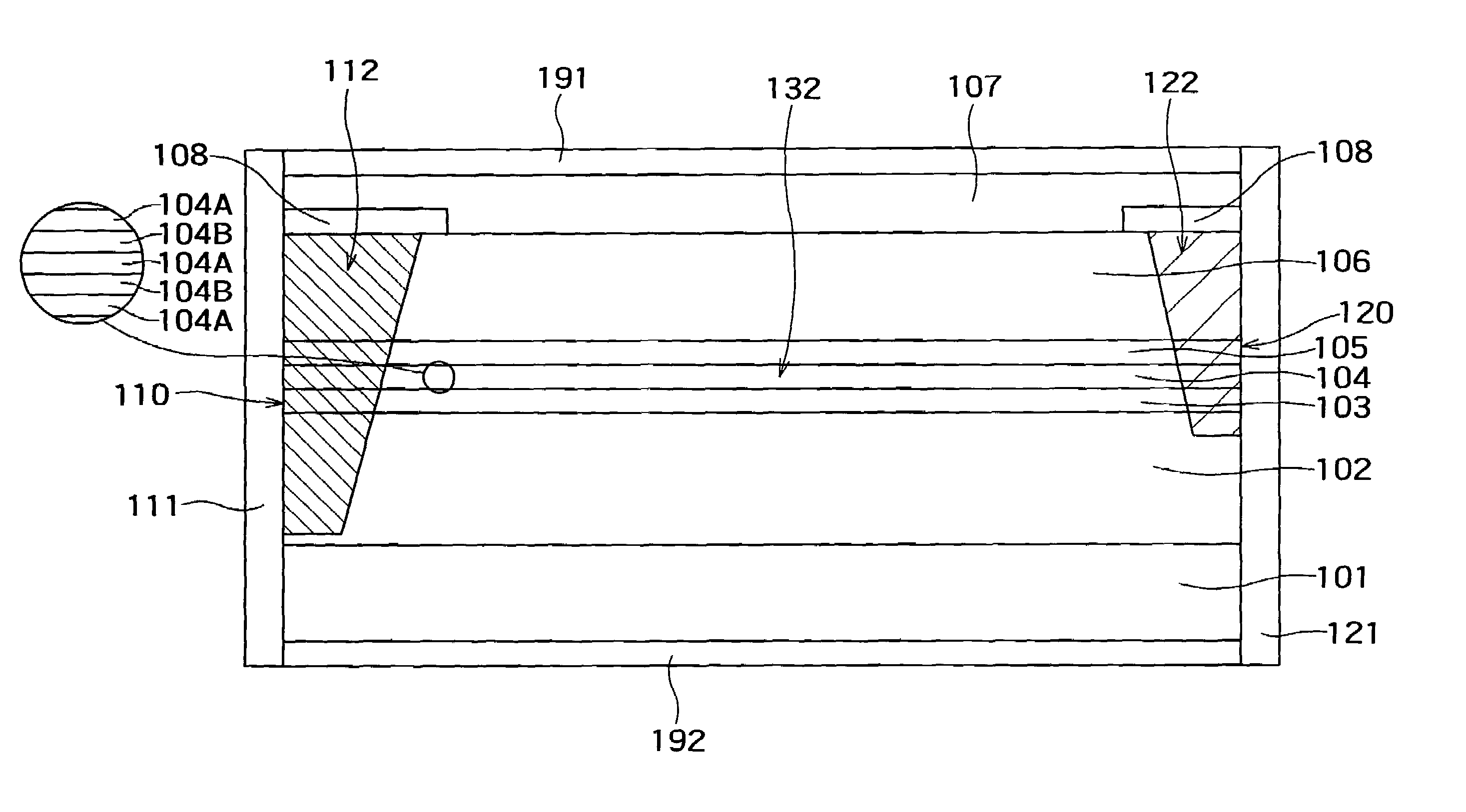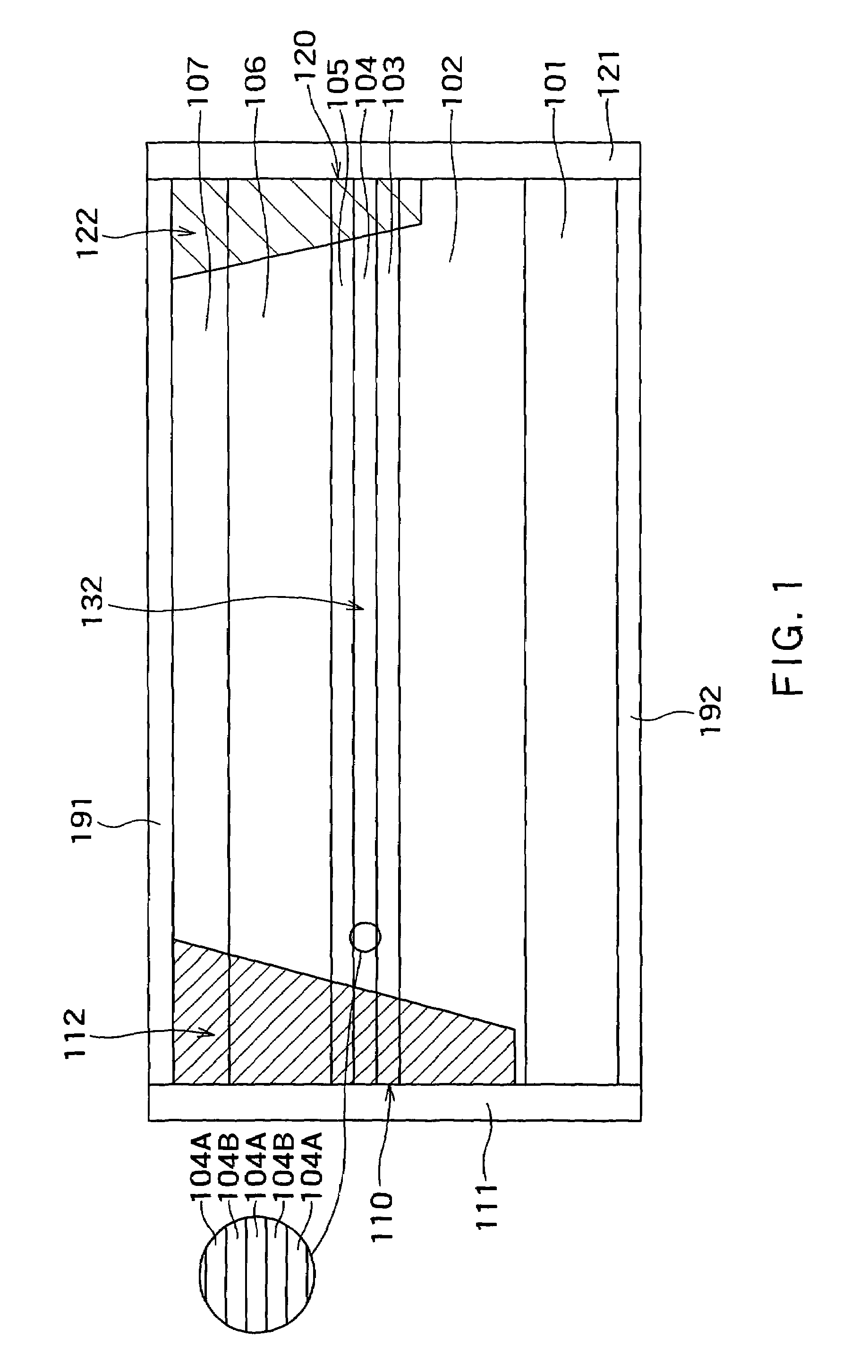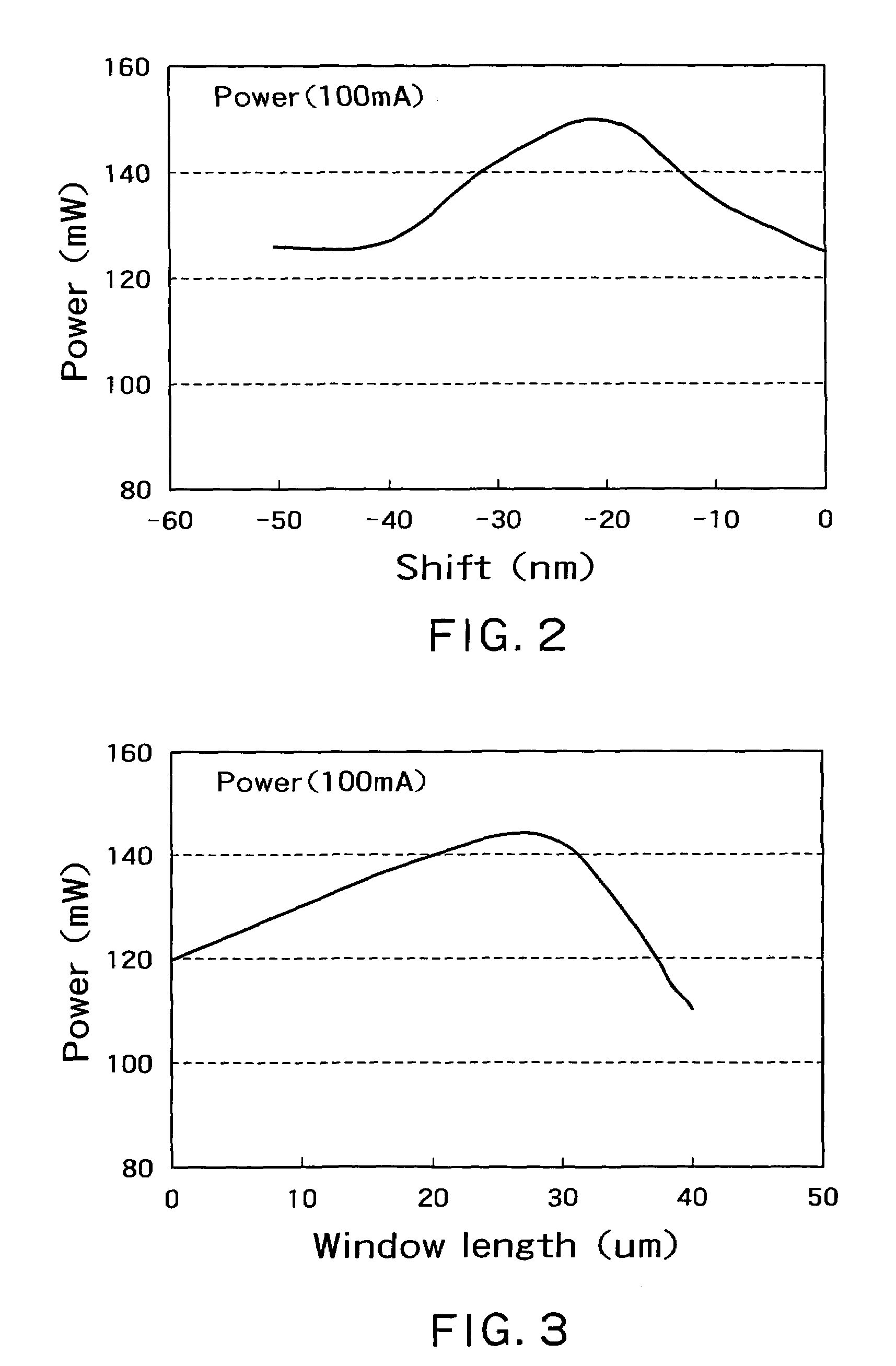Semiconductor laser element
a laser element and semiconductor technology, applied in the field of semiconductor laser elements, can solve problems such as catastrophic optical damage (cod) and other problems, and achieve the effects of enhancing the output power of laser light from the front edge 210, and enhancing the light output power of semiconductor lasers
- Summary
- Abstract
- Description
- Claims
- Application Information
AI Technical Summary
Benefits of technology
Problems solved by technology
Method used
Image
Examples
first embodiment
(First Embodiment)
[0031]FIG. 1 is a cross-sectional view of a semiconductor laser element according to the first embodiment of the present invention. On an n-type GaAs substrate 101, there are sequentially formed an n-type clad layer 102 of In0.5(Ga0.3Al0.7)0.5P, guide layer 103 of In0.5(Ga0.4Al0.6)0.5P, active layer 104, guide layer 105 of In0.5(Ga0.4Al0.6)0.5P, p-type clad layer 106 of In0.5(Ga0.3Al0.7)0.5P, and p-type contact layer 107 of GaAs. The active layer 104 has a multiple well structure alternately stacking well layers 104A of In0.5Ga0.5P and barrier layers 104B of In0.5(Ga0.5Al0.5)0.5P. The active layer 104 is supplied with a current injected from a p-side electrode 191 shown as the top layer and an n-side electrode 192 shown as the bottom layer in the figure. With the injection of the current, the active layer emits light of a wavelength from 600 to 700 nm from its emission region 132 toward the front edge (first edge) 110 on the left and the rear edge (second edge) 120...
second embodiment
(Second Embodiment)
[0046]FIG. 4 is a cross-sectional view of a semiconductor laser element according to the second embodiment of the invention. The element of FIG. 4 has a structure similar to the element according to the first embodiment (FIG. 1), but made by first forming the layers up to the In0.5(Ga0.3Al0.7)0.5P p-type clad layer 106 by crystal growth, thereafter forming the window regions 112, 122, then forming a current blocking layer 108 of n-type GaAs to minimize the current flow into the window regions 112, 122, and thereafter forming the p-type contact layer 107 on the entire surface. In the other respects of the structure, the element shown here is substantially the same as the element according to the first embodiment (FIG. 1), and details thereof are not explained here.
[0047]In the structure of FIG. 4, the current blocking layer 108 contributes to more reliably reducing the current injection into the window regions 112, 122 and more reliably preventing the rise of tempe...
PUM
| Property | Measurement | Unit |
|---|---|---|
| reflectance | aaaaa | aaaaa |
| length | aaaaa | aaaaa |
| length | aaaaa | aaaaa |
Abstract
Description
Claims
Application Information
 Login to View More
Login to View More - R&D
- Intellectual Property
- Life Sciences
- Materials
- Tech Scout
- Unparalleled Data Quality
- Higher Quality Content
- 60% Fewer Hallucinations
Browse by: Latest US Patents, China's latest patents, Technical Efficacy Thesaurus, Application Domain, Technology Topic, Popular Technical Reports.
© 2025 PatSnap. All rights reserved.Legal|Privacy policy|Modern Slavery Act Transparency Statement|Sitemap|About US| Contact US: help@patsnap.com



